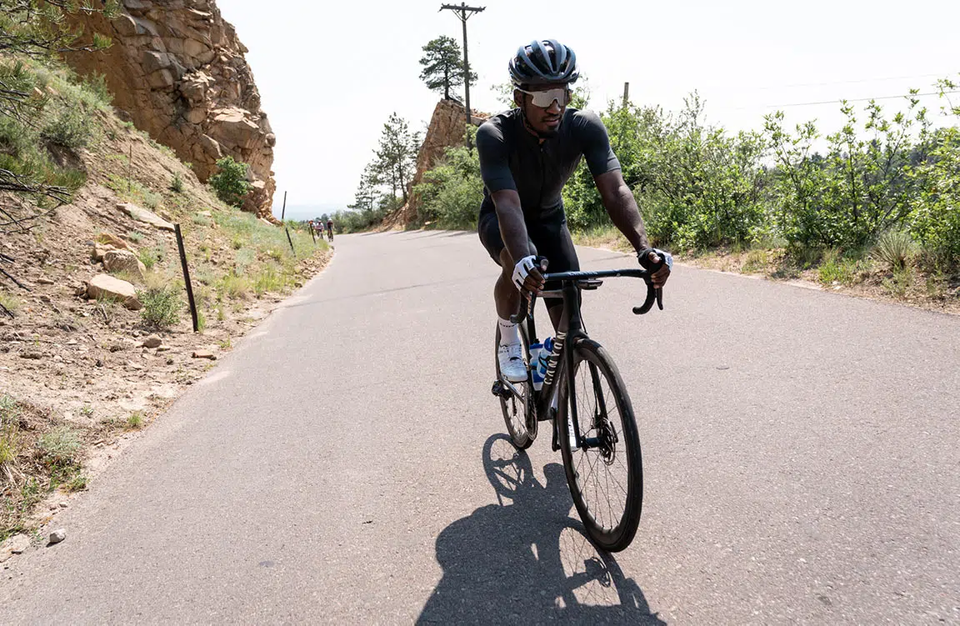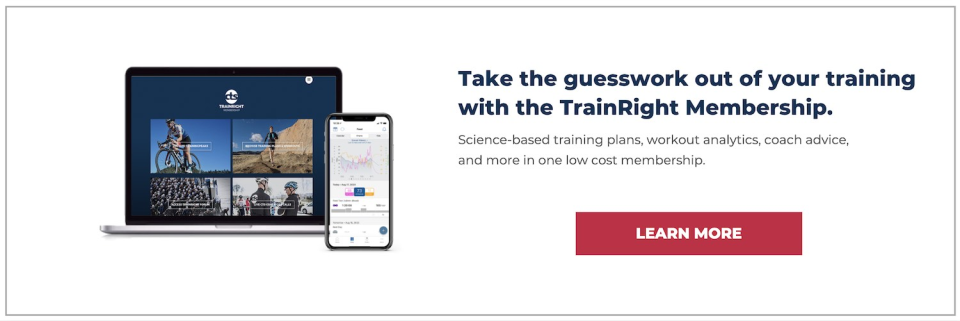How to Get Ready for Bike Racing Season
Spring can be a tricky time for cyclists. Base training season is over and spring and summer races are on the horizon. As a result, it’s time to shift from building fitness for the season to optimizing performance for specific events. Here’s how to change your training so you’re ready to achieve your goals

Annual Periodization Plan
Goal-oriented training for cycling typically follows periodization plan that focuses on the least event-specific areas of fitness first, and then progressively narrows the focus to the most event-specific areas. There are multiple ways to arrange training periods, based on the weekly training hours available to an athlete, their experience level, and the type and number of events they are preparing for.
The most basic version of a periodization plan is an annual plan that builds to one period of peak performance. Such a plan commonly starts with a long period of base aerobic training. At CTS we sometimes refer to this as the Foundation Period, and it can last 2-4 months. Training intensity is kept generally low (Zone 2, EnduranceMiles) for athletes who have 8-10+ hours/week to train. Moderate-intensity aerobic intervals are included to increase training workload for Time-Crunched Cyclists (≤ 8 hours/week for training).
Build/Preparation Period
The build phase – or Preparation Period – follows and entails an increase in intensity. This typically includes long intervals at Tempo, SweetSpot, and Functional Threshold Power. This can be thought of as the time to stack the basic physiological building blocks that will be used to create race-specific power. Building a big aerobic engine requires repetition by way of training blocks featuring a high volume of time-at-intensity. This doesn’t leave a lot of time or energy for race-specific workouts, so training races and low-priority competitions are included to address specificity. For athletes preparing for A-races in early to mid-summer, Preparation Period may include March and April, perhaps into May.
Specialization Period
The Specialization Period then sharpens generalized fitness and focuses training to meet the specific demands of a goal event(s). This is when that big aerobic engine gets tuned for peak performance. It is important to remember that tuning means losing performance in some areas to gain it in others. As a result, some of the less event-specific components of your fitness may fade. For instance, if you are tuning your training for criterium racing, your aerobic endurance may diminish a bit when you focus your training on short, high-intensity intervals. For athletes preparing for A-races in early to mid-summer, Specialization Period may start in May or later, depending on the timing of goal events.
Some periodization plans separate out the Peak or Race Period from the Specialization Period. Others include peaking, tapering, and performance at goal events in the Specialization Period. Regardless, you can only maintain peak fitness for a limited time. After goal events are completed, athletes take a Transition Period, a time of reduced training load and unstructured training to recover and prepare for the next season.
How to Shift from Preparation to Specialization Training
To be successful, the shift from Preparation to Specialization training needs to be noticeable and significant. Athletes sometimes make the mistake of taking half-steps instead of committing to the Specialization Period. This is “bird in the hand” thinking, in that they don’t want to give up any of their current, albeit generalized, fitness in pursuit of more specific gains. Unfortunately, for many bike racers and cyclists looking for speed, this thinking limits their opportunity to develop speed, repeatability, and the power to win. To achieve your goals and reach new heights of performance, take the following steps as you shift from Preparation to Specialization:
Identify Race-Specific Demands/Intensities
You must know the demands of your goal event to address those demands in your training. In a general sense, this is relatively simple. For instance, short, high intensity events like criteriums, short-track and cross-country mountain bike races, and even short road races, feature repeated short maximum-intensity efforts separated by limited recovery.
To tailor the general principles of event demands to your personal training, you must go a step further. With a coach or through examining your own data, you want to determine durations and power outputs for efforts that mean the difference between staying in the peloton and getting dropped, maintaining position or losing ground, or creating potentially race-winning selections. These power outputs and durations will be specific to the length of your events, the category you’re racing in, the technical aspects of the course.
Reduce Duration as Intensity Increases
Particularly for athletes focusing on improving speed and repeatability, the move to the Specialization Period will mean more short, maximum intensity intervals and fewer long, sustainable intervals. When looking at training data, Normalized Power for individual workouts may increase, but daily Training Stress Score may decrease.
Normalized Power is an adjusted power output for a ride that aims to quantify the physiological cost of a workout despite highly variable power outputs. For a very variable workout (max intervals and very easy spinning recovery, or a race), NP may be much higher than Average Power. For a very steady ride, NP and Average Power may be very similar. So, if your training shifts from longer, steadier efforts to shorter, higher intensity efforts, NP may increase.
Hunter Allen and Dr. Andy Coggan developed Training Stress Score to create a single metric that accounted for both intensity and duration to quantify the training load of individual workouts. Workouts that feature maximum-intensity intervals separated by long recovery periods – like sprint and anaerobic capacity intervals – are very strenuous but can result in a low daily TSS because the time-at-intensity is so short.
Prepare for lower CTL
A lower Chronic Training Load (CTL) can be a consequence of shifting from longer, FTP-focused workouts to shorter intervals that target power at VO2 max, repeatability, and anaerobic power. CTL is a weighted 42-day average of daily TSS values. So, if TSS goes down due to a shift in training focus, CTL will dip. Increasing recovery or rest days in your training, which is often necessary to recover from high-intensity workouts, also brings CTL down.
Athletes who regard CTL as their “fitness level” may find a drop in CTL disturbing. It shouldn’t be, however. It is merely a reflection of the shifting focus of your training. Listen to our podcast episode on the topic to get all the details about CTL.
Incorporate races – but not too many
Group rides and races can play an important role in training year-round. They become even more important as you shift from the Preparation to Specialization Period. Structured workouts in the Specialization Period are great for creating a prescribed amount of time-at-intensity. Races add in the elements of unpredictability and variability. The efforts are similar in terms of intensity and power output, but the durations and recovery periods are not consistent.
Although racing is essential, there are risks to incorporating too many races and fast group rides into the Specialization Period. The same variability that’s necessary to prepare for real-world racing can take away from accumulating specific time-at-intensity for training. One training race/fast group ride per week is a good rule of thumb. A second one can replace a structured high-intensity interval workout. However, look at the training files to make sure the efforts are moving your training in the right direction.
Keep working on Functional Threshold Power
When you make your training more event-specific, something must give. However, functional Threshold Power is an aspect of your fitness you want to retain. This means devoting at least one workout every 7-10 days to power at lactate threshold. These workouts bolster maximum sustainable power and your ability to recover quickly between efforts above threshold.
When to Start Your Specialization Period
Timing is important for the Specialization Period. On one hand, training adaptations can take several weeks to manifest as improved performance. And on the other hand, when athletes start the Specialization Period too early, they may reach the point of diminishing returns well before their goal events.
Everyone is a bit different, but most athletes perform well starting the Specialization Period about two months before goal events. This provides time for training and adaptation, as well as time for a short taper. Just remember, it’s better to err on the side of being prepared too early than too late.
The above is a short excerpt from the full CTS TrainRight article, to read the full article, please visit: https://trainright.com/how-to-shift-training-from-build-phase-to-specialization-racing-phase
FREE 14 DAY MEMBERSHIP TRIAL
Gran Fondo Guide fans, click on the image above and get TrainRight Membership for a 14 day no obligation trial. TrainRight Membership comes with a 30-day money-back guarantee!
About CTS
As it has since 2000, Carmichael Training Systems leads the endurance coaching industry with proven and innovative products, services, and content. And the results speak for themselves; no other coaching company produces more champions, in such a wide variety of sports and age groups, than CTS.
For more information, please visit: https://trainright.com

